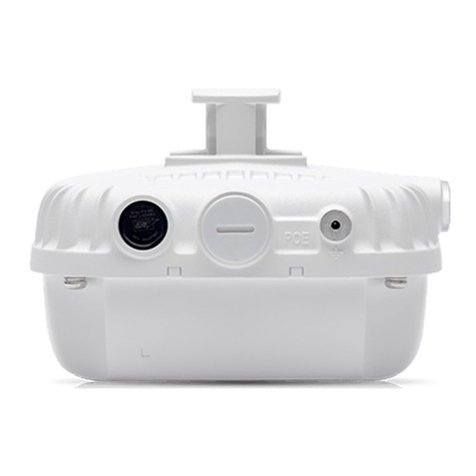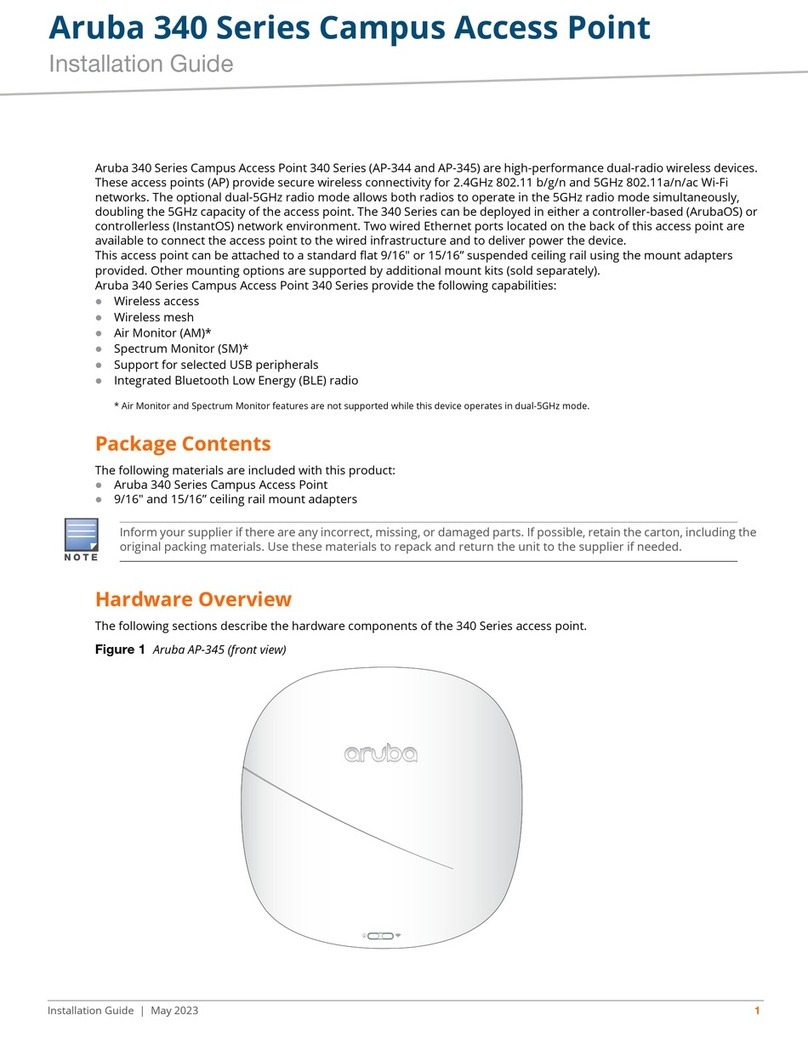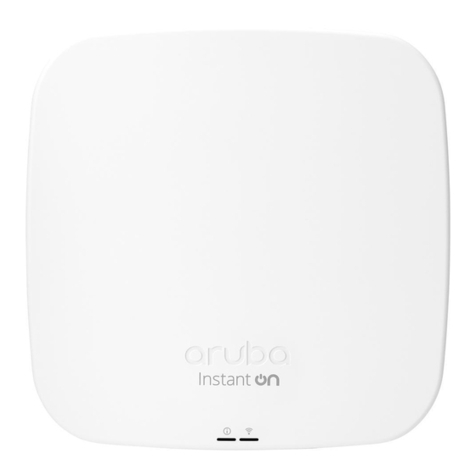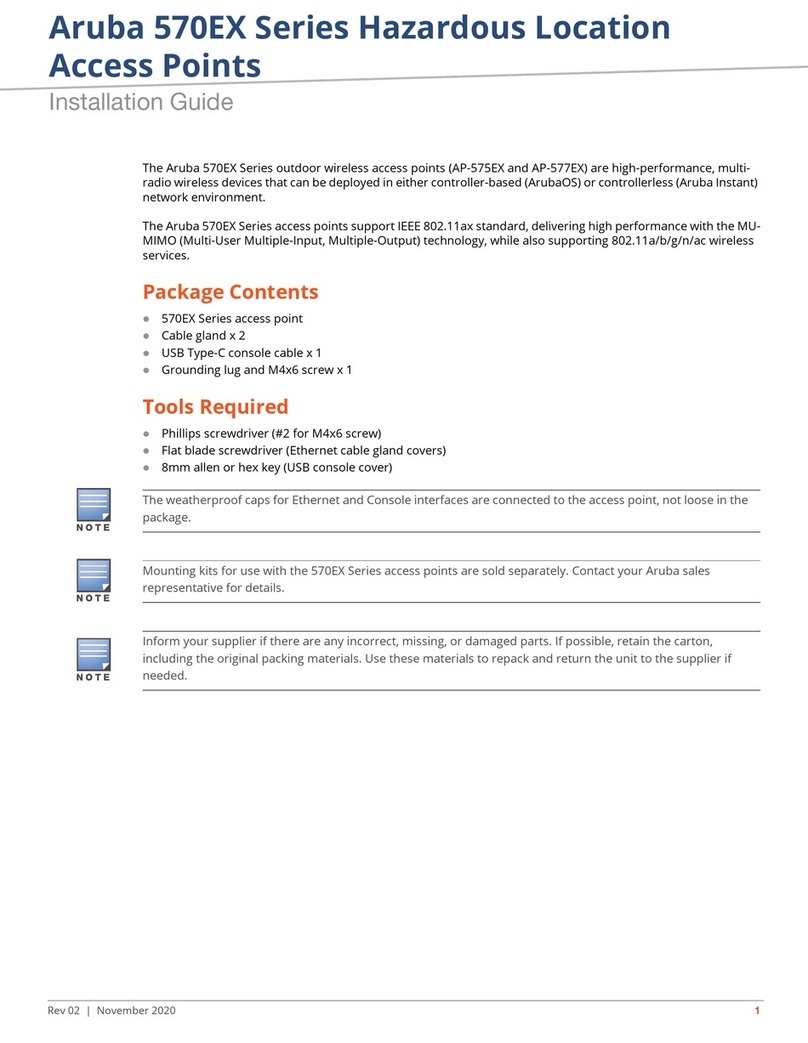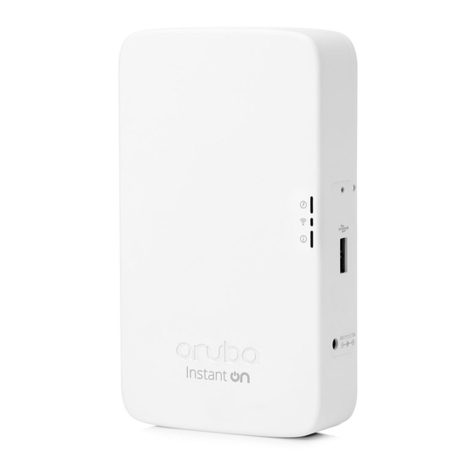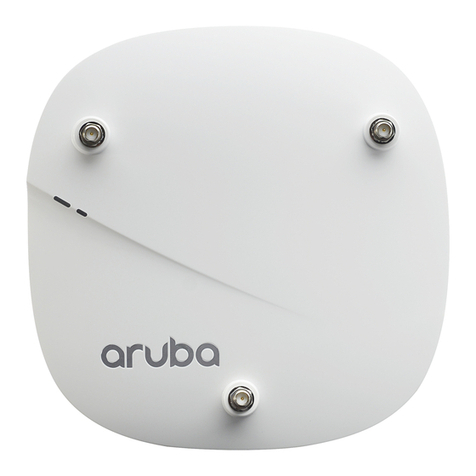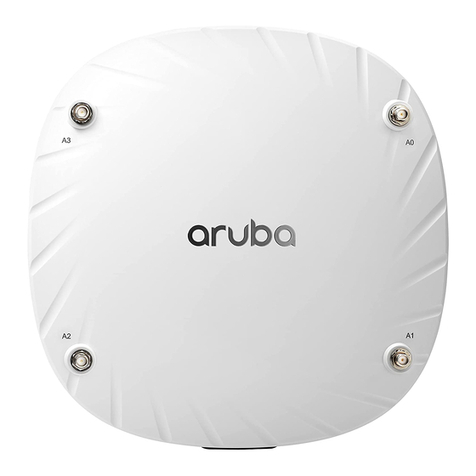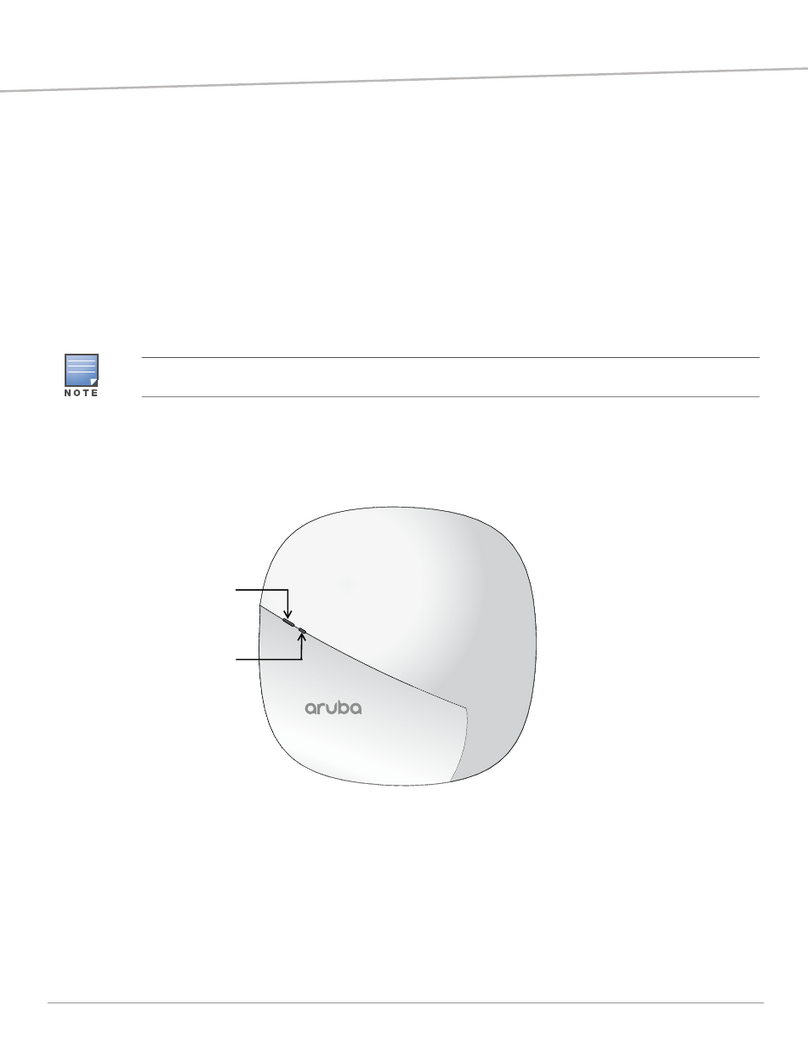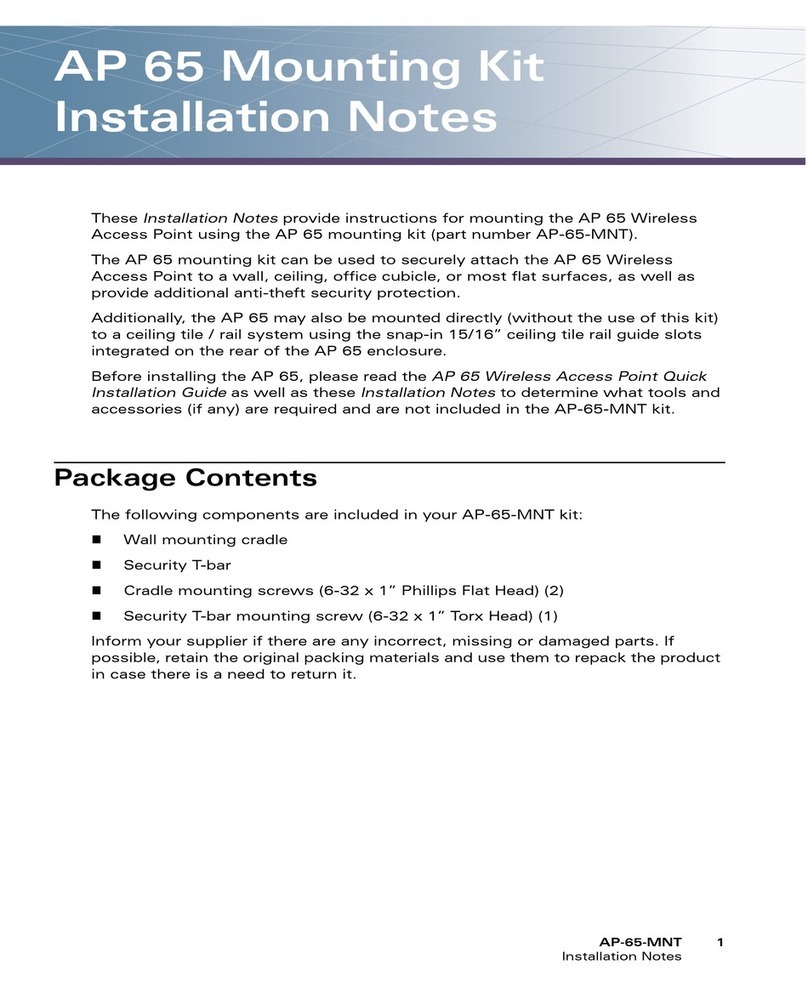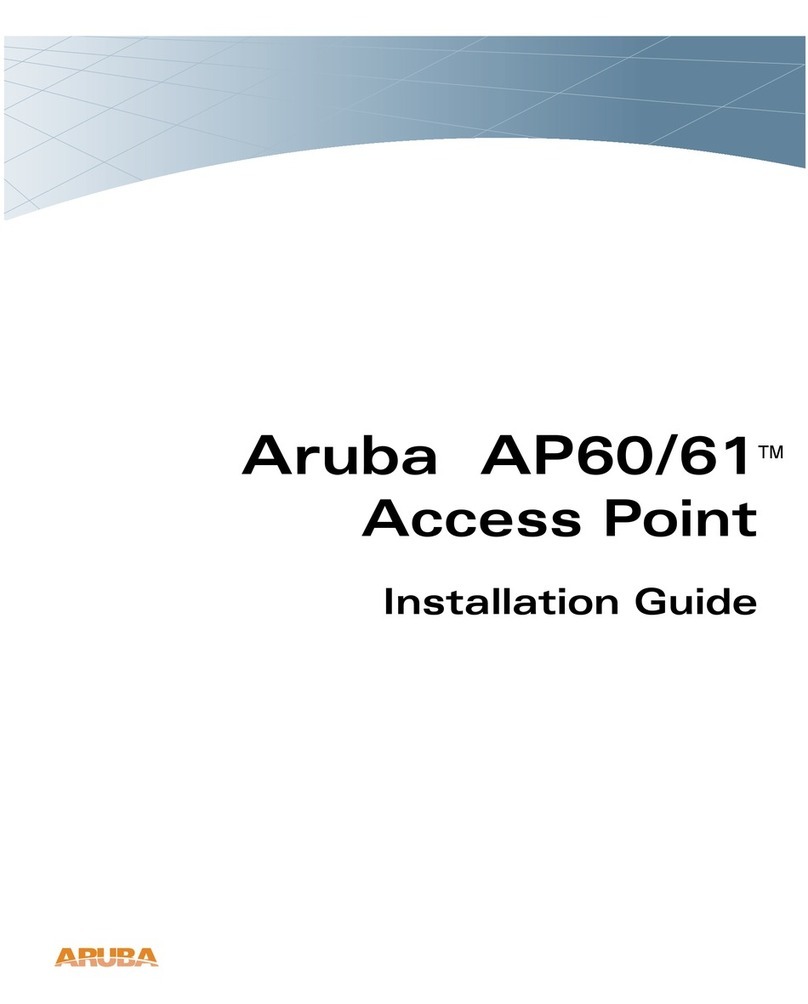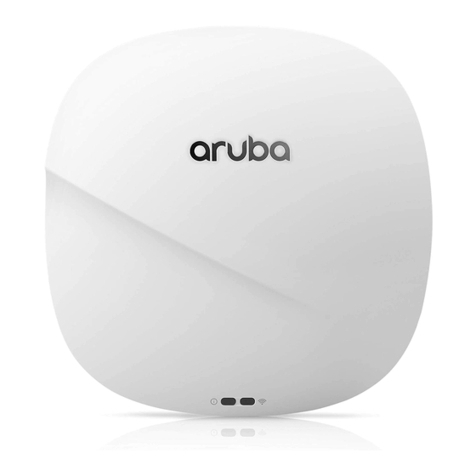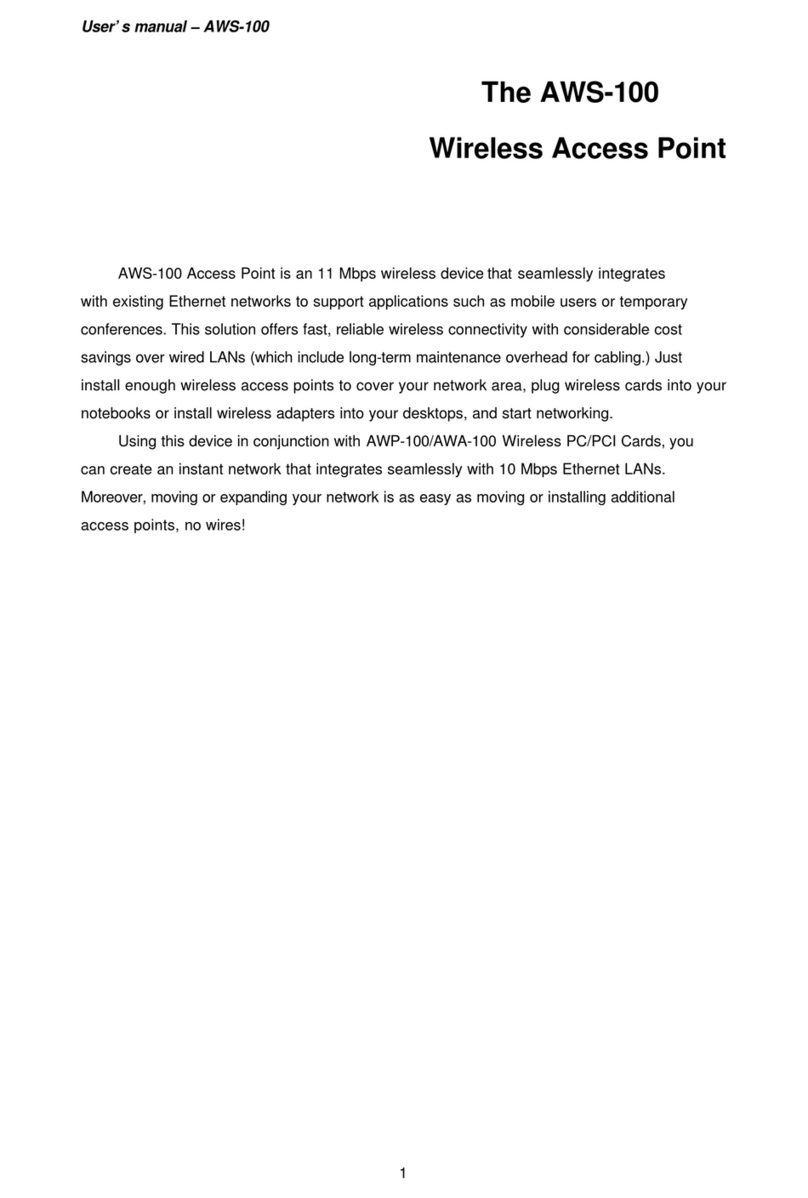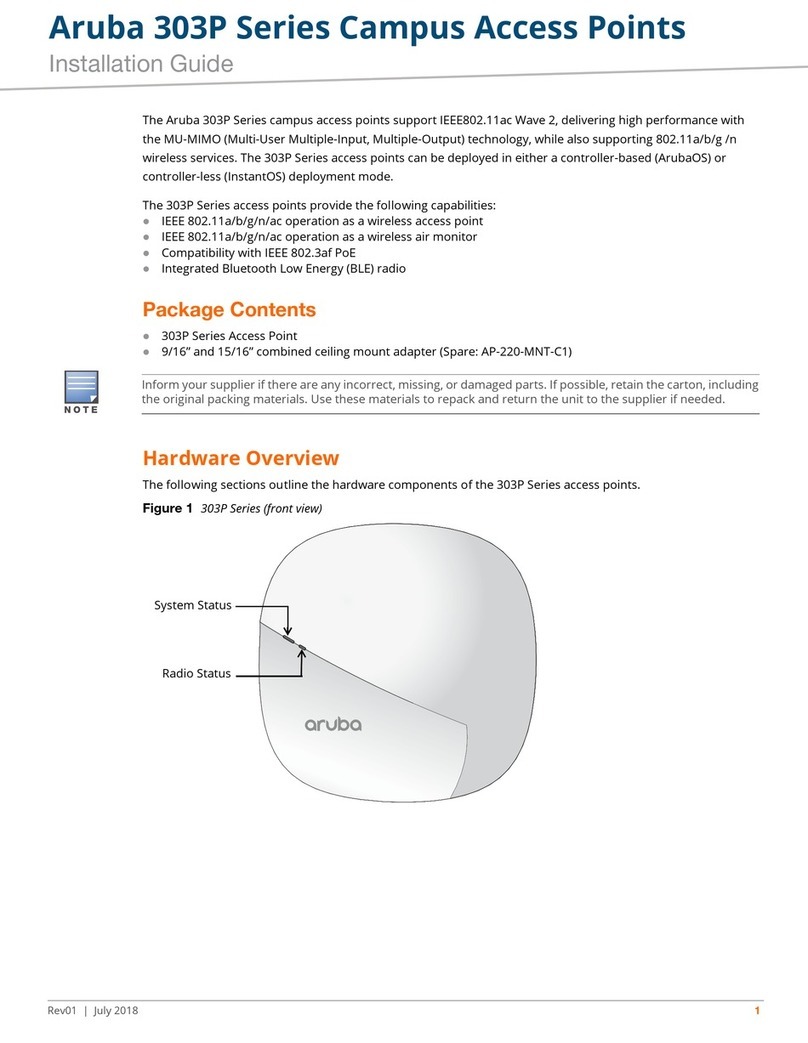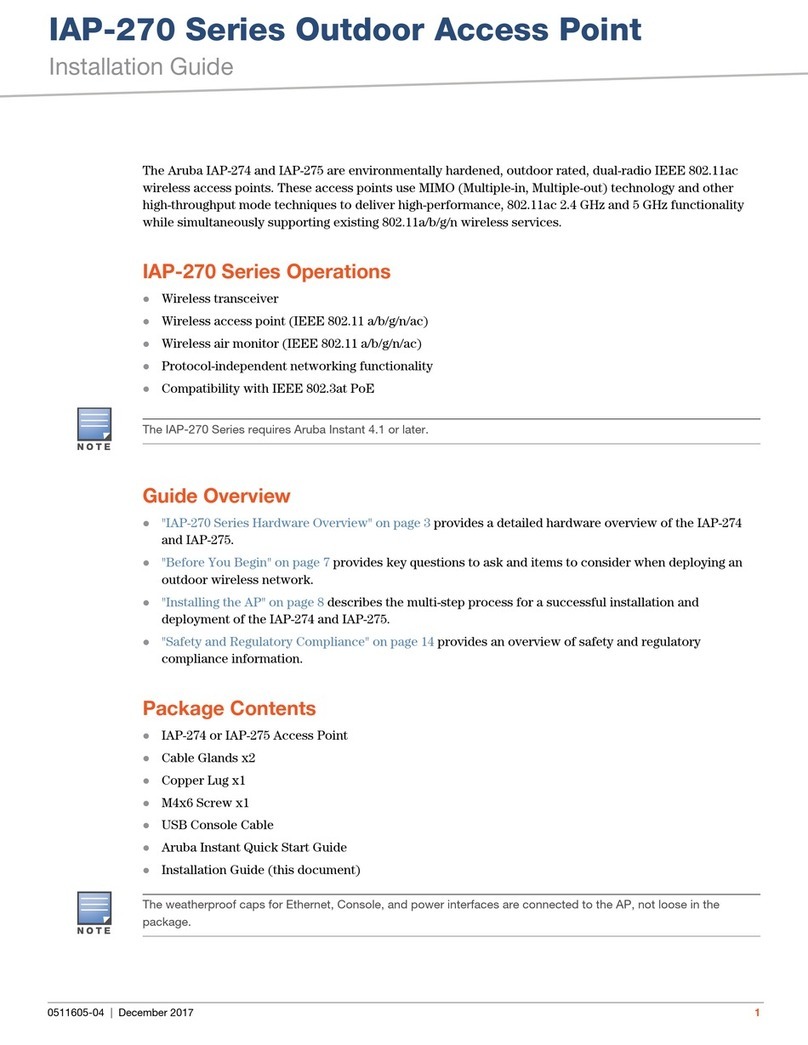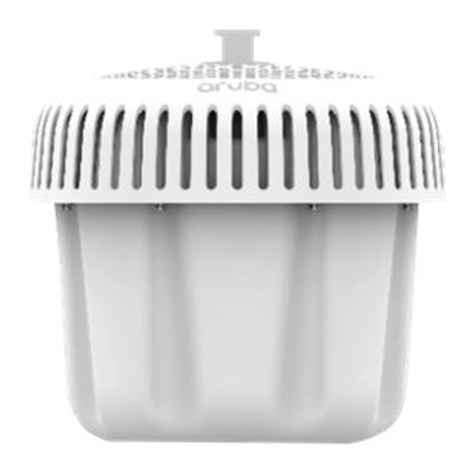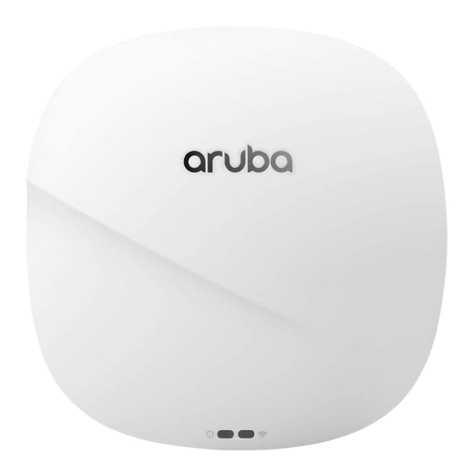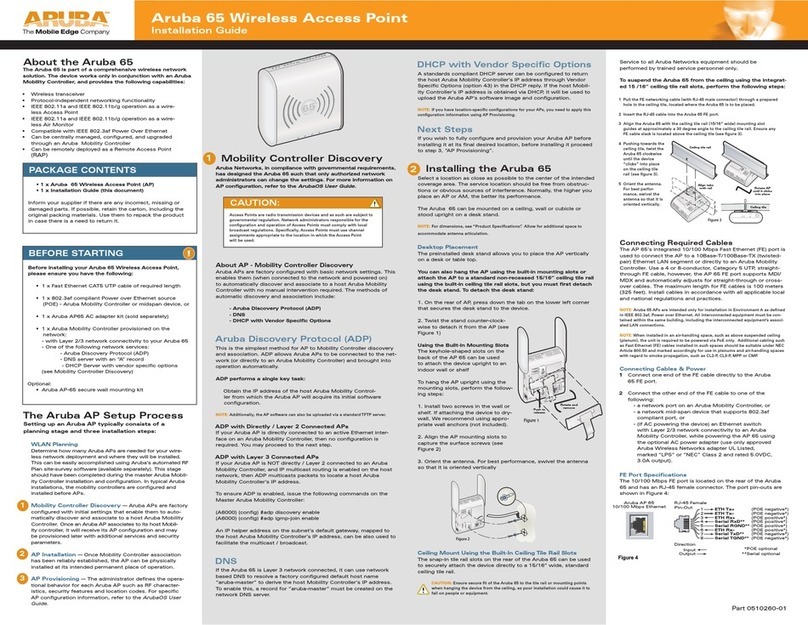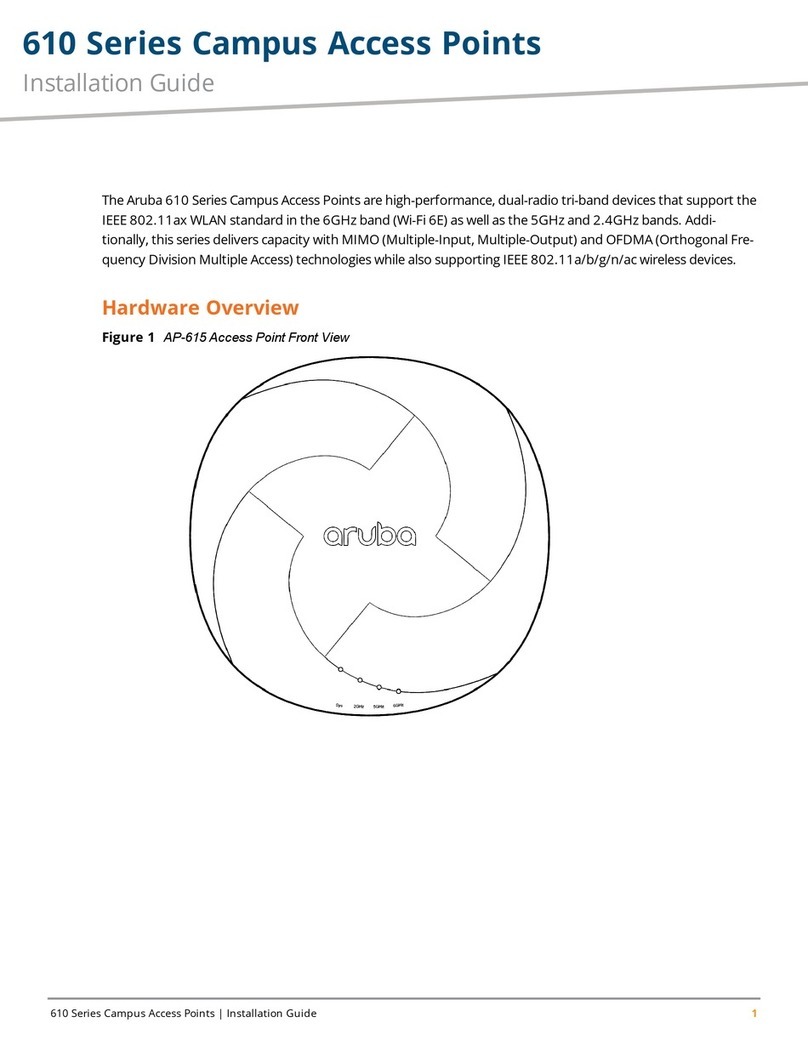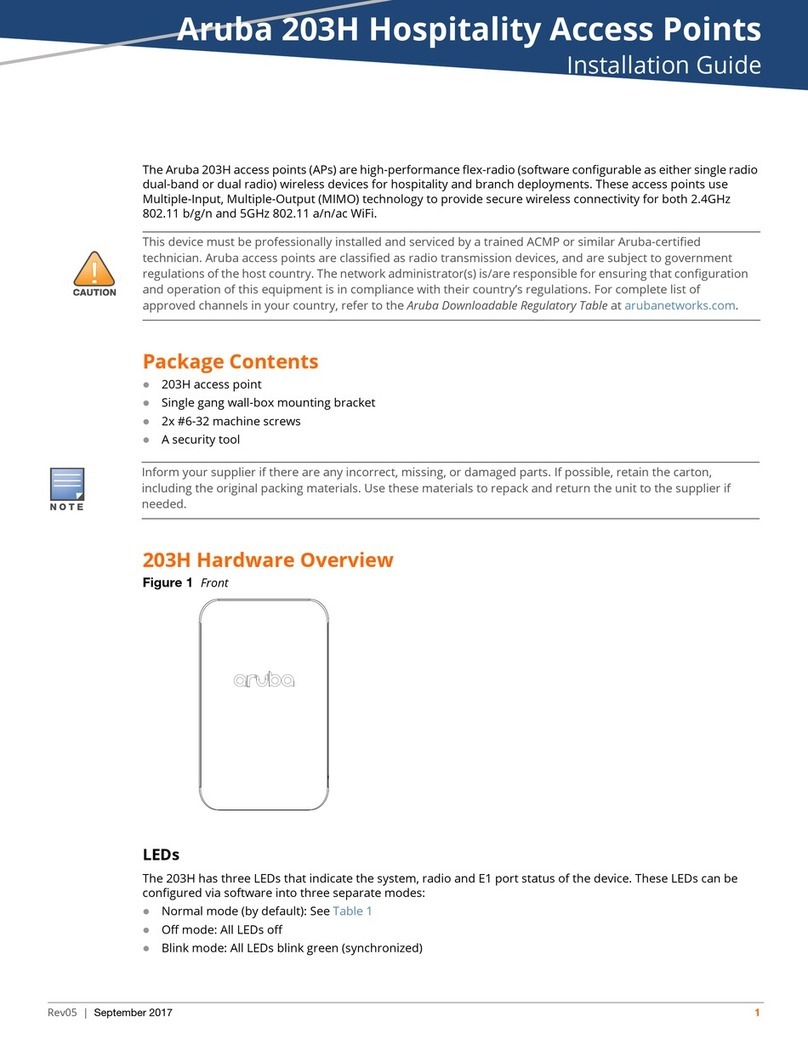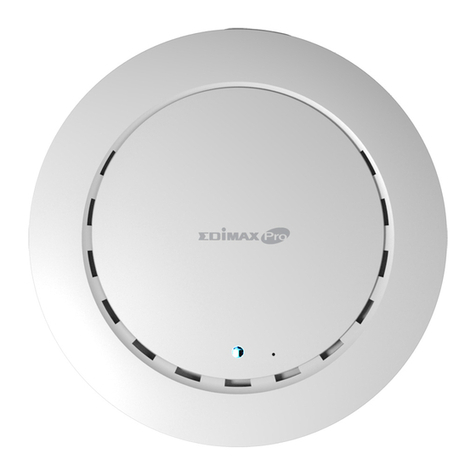
Aruba AP-85 Outdoor Access Point Series | Installation Guide |3
Contents
Preface ................................................................................................................................... 5
Guide Overview .....................................................................................................5
Related Documents ...............................................................................................5
Contacting Aruba Networks ..................................................................................6
Chapter 1 AP-85 Series Hardware Overview .......................................................... 7
About the AP-85 Series .........................................................................................7
AP-85 Series Operation ..................................................................................7
Minimum Software Requirements .........................................................................8
Package Checklist.................................................................................................8
Hardware Model Overview ....................................................................................9
AP-85 Series Front View...........................................................................9
AP-85 Series Rear View............................................................................9
AP-85 Series Top View...........................................................................10
AP-85TX Bottom View............................................................................10
AP-85FX/LX Bottom View.......................................................................11
LED Status Indicators ...................................................................................13
Optional Accessories...........................................................................................14
Chapter 2 Outdoor Planning and Deployment Considerations........................... 15
Planning and Deployment Considerations ..........................................................15
Scale Requirements ......................................................................................15
Identifying Known RF Absorbers/Reflectors/Interferences Sources ............15
RF Absorbers..........................................................................................15
RF Reflectors ..........................................................................................15
RF Interference Sources.........................................................................16
Line of Sight (Radio Path Planning)...............................................................16
Antenna Height .............................................................................................17
Antenna Position and Orientation .................................................................18
Radio Interference.........................................................................................19
Weather Conditions ......................................................................................19
Ethernet Cabling ...........................................................................................19
Grounding .....................................................................................................19
Chapter 3 AP-85 Series Installation....................................................................... 21
Pre-Installation Network Setup............................................................................21
Pre-Installation Checklist ..............................................................................21
Access Point Setup .............................................................................................21
Verifying Pre-Installation Connectivity ..........................................................22
Provisioning the AP.......................................................................................22
Installing the AP-85.......................................................................................22
Mounting the AP-85 ...............................................................................23
Positioning the AP-85.............................................................................27
Connecting Required Cables..................................................................28
Lightning Arrestor Installation.................................................................31
Antenna Installation ................................................................................31
Verifying Post-Installation Connectivity ........................................................32
